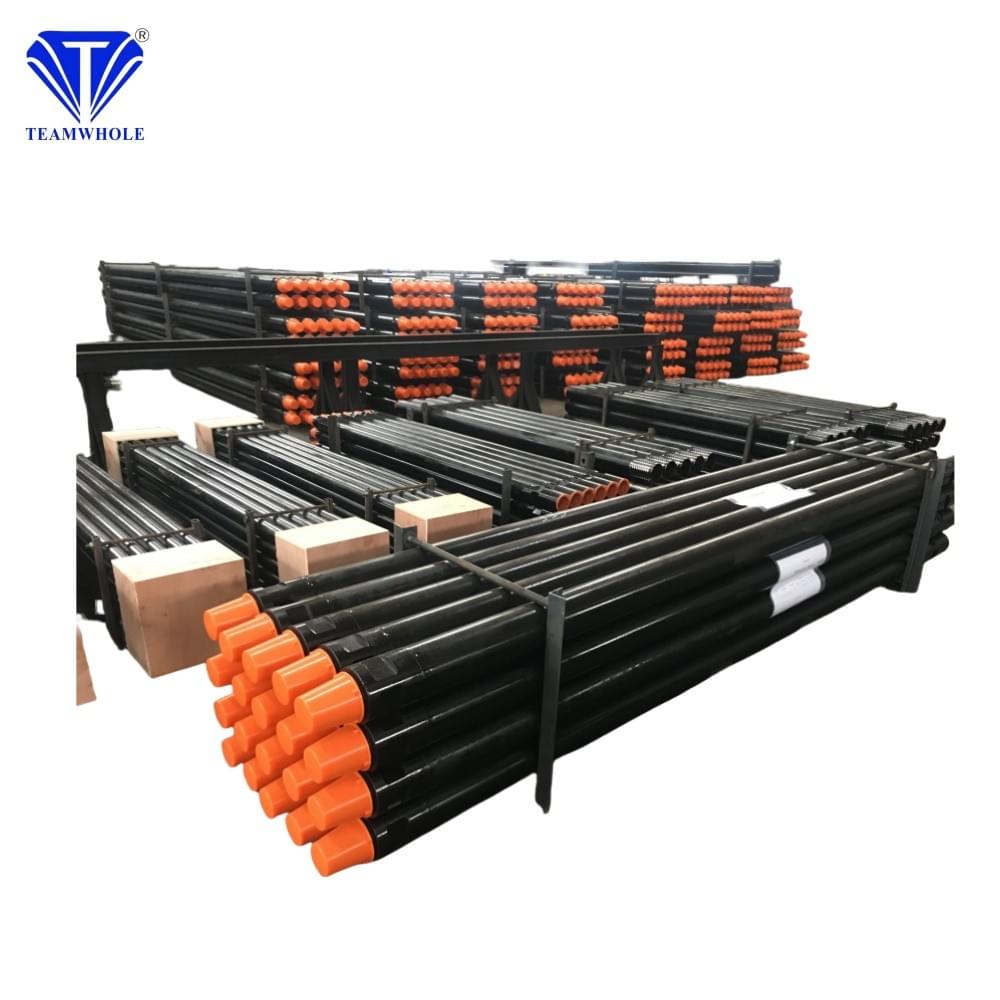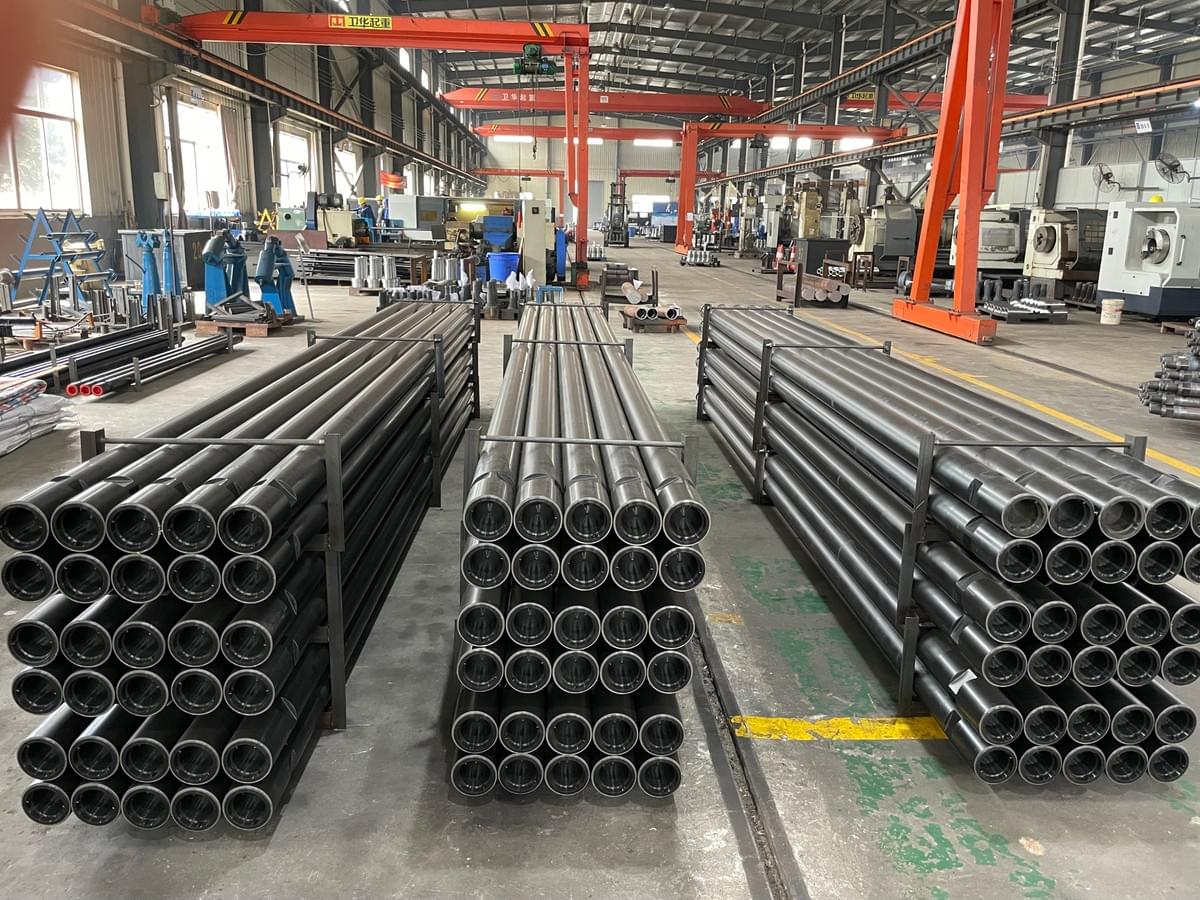Introduction
Drill pipes are essential components in Down-The-Hole (DTH) hammer drilling systems, serving as the conduit for compressed air and facilitating efficient rock penetration. In DTH rock drilling, the drill pipe connects the drill rig to the DTH hammer and DTH drill bit, ensuring optimal energy transfer and stability during operations. This article explores the role of drill pipes, their connection types (such as API, DIBH, and BECO threads), length variations (1M to 11M), and size ranges (60mm to 610mm), while emphasizing their compatibility with DTH hammers and drill rods.

I
n a DTH drilling system, the drill pipe functions as the primary structural component that transmits rotational force and percussive energy from the drill rig to the DTH hammer. The DTH hammer, in turn, drives the DTH drill bit into the rock, breaking it apart with high-impact blows. The drill pipe must withstand significant stress, including torque, compression, and vibration, while maintaining a sealed air passage for efficient hammer operation.
Key Components Linked to Drill Pipe
1. DTH Hammer –The hammer is attached to the bottom end of the drill pipe and generates high-frequency impacts to fracture rock.
2. DTH Drill Bit – Connected to the DTH hammer, the bit cuts and crushes the rock formation.
3. Drill Rod – Often used interchangeably with drill pipe, though rods are typically shorter and used in different drilling methods.
4. Drill Rig – The machine that provides rotational and feed force to the drill string.
Drill Pipe Specifications: Size, Length, and Thread Types
Size Range (60mm to 610mm)
Drill pipes come in various diameters to suit different drilling applications:
Small-diameter pipes (60mm–150mm): Used for shallow drilling, mineral exploration, and water wells.
Medium-diameter pipes (150mm–300mm): Common in quarrying and construction projects.
Large-diameter pipes (300mm–610mm): Employed in deep-hole drilling, oil & gas, and large-scale mining.
Length Variations (1M to 11M)
Drill pipe lengths are selected based on drilling depth and rig specifications:
Short pipes (1M–3M): Used in confined spaces or shallow drilling.
Standard pipes (3M–6M): Most common in medium-depth drilling.
Long pipes (6M–11M): Preferred for deep-hole drilling to reduce connection frequency.
Thread Connections (API, DIBH, BECO)
Thread types ensure secure connections between drill pipes, DTH hammers, and drill rods:
1. API Threads – Standardized by the American Petroleum Institute, these threads are widely used in oilfield and heavy-duty drilling.
2. DIBH (Drop-In Ball Head) Threads – Designed for high-impact DTH drilling, offering superior load distribution.
3. BECO Threads – A robust thread profile used in European and global drilling applications, known for durability.
Matching Drill Pipe to DTH Hammer
Selecting the right drill pipe for a DTH hammer involves considering:
Thread Compatibility – The drill pipe must match the DTH hammer’s thread type (API, DIBH, or BECO).
Pressure and Load Capacity – The pipe must handle the air pressure and impact forces from the hammer.
Wear Resistance – High-quality steel construction ensures longevity in abrasive rock conditions.
Conclusion
Drill pipes are critical in DTH rock drilling, connecting the drill rig to the DTH hammer and drill bit while enduring high stress and wear. With size options ranging from 60mm to 610mm, lengths from 1M to 11M, and thread types like API, DIBH, and BECO, drill pipes must be carefully selected to match the DTH hammer and drilling conditions. Proper matching ensures efficient drilling performance, reduced downtime, and extended equipment life.By understanding these key aspects, drilling professionals can optimize their DTH drilling operations for maximum productivity and cost-effectiveness.


